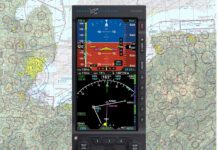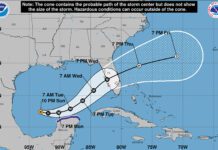The area forecast is being eliminated. The old, familiar, text-based weather product, coded as “FA,” will be discontinued by the National Weather Service (NWS) sometime during 2016. The upcoming change applies to the six area forecasts covering the Continental U.S., plus the single product for Hawaii. Area forecasts for Alaska, the Caribbean and the Gulf of Mexico will be unaffected, at least for now.
After a public comment period begun in 2014, the FAA and NWS determined the FA resulted in “a broad forecast of limited value.” The NWS said it “provides equivalent information through a number of better alternatives,” including “more-modern digital and graphical forecasts, observations, and communications capabilities.” The NWS added that existing alternatives to the FA include surface weather analyses and prognostic charts, significant weather (SIGWX) charts, terminal aerodrome forecasts (TAFs) and Airmets.
According to AOPA, the FAA believes the other NWS products “are much more accurate, have more detailed information, and higher resolution. These products, taken with other weather information such as TAFs (terminal aerodrome forecasts), METARs (surface observations), and radar and satellite data, will provide pilots and briefers with better situational awareness and lead to improved decision making,” said the FAA’s Patrick Murphy, a senior aviation meteorologist with the FAA’s NextGen program.
Precise timing for the transition away from the FA and introduction of new products is uncertain, but the change is scheduled to occur during the coming year. Also according to AOPA, there will be a three-month transition period during which the FA will remain available. Rune Duke, AOPA’s director of government affairs for airspace and air traffic, said, “Several of the replacement weather products were expected to be available this year, but have been delayed.”
Eliminating area forecasts for the Continental U.S. may pose something of a dilemma for IFR operations, which have depended, at least in part, on the FA for helping determine whether an alternate airport must be listed on a flight plan. “Instrument pilots who rely on area forecasts to determine whether to file an alternate airport will be able to use new graphical products to determine ceiling and visibility,” AOPA’s Duke said. Given the FA’s long history, its elimination will have a ripple effect through FAA training and guidance materials, including written exams.
While I always have mixed emotions when something old and familiar goes away, I do understand criticisms of the existing FA. Using graphical products will relieve a pilot from having to read and comprehend the text, once again proving that a picture can be worth a lot of words. But I’ll miss the text-based area forecast.



